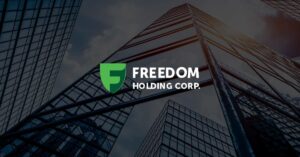For much of the modern corporate era, the chief financial officer was viewed primarily as a gatekeeper, overseeing budgets, enforcing compliance, and keeping a close watch on spending. In today’s volatile business environment, that role is evolving faster than at any point in recent history. Modern CFOs are being asked to step into a different arena: that of growth architect, designing financial systems that deliver agility, resilience, and a competitive edge.
This shift is being driven by a convergence of pressures. Inflation, tariff uncertainty, and persistent talent shortages are stretching operational budgets. At the same time, boards and CEOs expect finance leaders to uncover efficiencies, mitigate risk, and still find the resources to fund innovation. The ability to balance these demands has become a defining marker of effective financial leadership.
A recent PwC Pulse Survey found that 57% of CFOs and finance leaders say U.S. economic policy is reshaping their short-term strategies, and 58% are increasing investments in AI to enable faster, smarter planning. These findings underscore that the CFO’s influence now extends beyond managing financial statements to designing systems that can adapt in real time to shifting economic, policy, and operational conditions.
Covering More Ground than Ever Before
The modern CFO now must integrate multiple, often competing, responsibilities into a unified vision. That means overseeing tight cost control to steady budgets, while simultaneously embedding robust risk frameworks to guard against fraud, regulatory missteps, and market volatility. Digital transformation has also landed squarely in their domain: selecting and deploying technology platforms that strengthen agility and insight is now a must-have.
At the same time, CFOs are under pressure to identify and fund innovation, with no erosion to financial discipline, requiring them to be both guardians of stability and catalysts for growth. Balancing these roles, particularly under conditions of inflation and unpredictable trade environments and amid demand for scarce talent, is becoming the defining challenge of modern financial leadership.
Technology as a Catalyst
Automation and AI have emerged as critical tools in enabling this integration. Finance leaders are investing in systems that streamline high-volume processes, flag anomalies before they become costly errors, and provide real-time visibility into cash flow. This capability is especially important in industries with heavy transaction loads, such as manufacturing, transportation, and construction, where even small improvements in processing speed and accuracy can produce significant margin gains.
The aim is not just to process more transactions faster; it’s to elevate the finance function’s role in corporate decision-making. By unifying workflows, embedding fraud detection, and delivering actionable insights on demand, advanced platforms are transforming finance departments from back-office processors into strategic hubs. This evolution frees CFOs to spend less time on operational firefighting and more on guiding investments, assessing risk scenarios, and collaborating on enterprise growth strategies.
One example of this approach is Yooz’s Lean Financial Operations framework, which blends AI-driven document intelligence, adaptive workflows, and embedded security controls. Designed to work alongside existing ERP systems, it cuts waste, reduces invoice errors, and detects fraud before payments are issued without requiring disruptive system overhauls.
Building Skills for the Future
Even with the best tools in place, technology alone will not make the modern CFO successful. The human element remains critical. Finance leaders are investing in the skills of their teams, emphasizing capabilities such as data analysis, scenario planning, and strategic communication. The ability to interpret insights, weigh trade-offs, and present clear recommendations to the C-suite and board is now as important as technical accounting knowledge.
Forward-looking CFOs are also recognizing the value of cross-functional fluency. A deep understanding of operations, supply chain, customer behavior, and regulatory environments allows finance leaders to frame their guidance in ways that resonate across the organization. In many cases, this means embedding finance talent into other business units to strengthen collaboration and ensure the numbers align with operational realities.
Navigating the Road Ahead
The next chapter of the CFO role will likely be defined by three interconnected priorities:
- Data-Driven Agility: Building systems that surface accurate, real-time data to support rapid decision-making, especially during market shifts or disruptions.
- Integrated Risk Management: Embedding security, compliance, and fraud prevention into daily operations rather than treating them as afterthoughts.
- Strategic Capital Deployment: Balancing cost control with deliberate investments in innovation, talent, and market expansion.
CFOs who excel in these areas will not only safeguard their organizations but also create the conditions for sustained growth. Those who remain narrowly focused on traditional gatekeeping responsibilities risk being left behind as their peers lead the charge into new markets and operating models.
From Stewardship to Leadership
The modern CFO’s mandate is clear: architect financial operations that protect the enterprise while enabling it to move faster and smarter. Achieving this requires the mindset of a steward and the vision of a strategist. In an era where financial and operational realities are deeply intertwined, the CFO is uniquely positioned to bridge those worlds.
For finance leaders willing to embrace this expanded role, the reward is more than operational efficiency or risk reduction. It is the opportunity to shape not just the balance sheet, but the future trajectory of the business — steering it through uncertainty and toward lasting growth.













